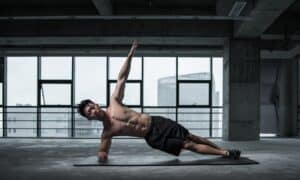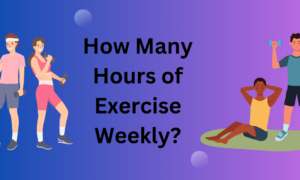Running is one of the most accessible and effective forms of exercise. Whether you’re hitting the pavement for stress relief or training for a marathon, the simplicity of running is what draws so many to it. However, what many runners don’t realize is that over time, repetitive movements and neglecting other aspects of fitness can lead to poor performance and injuries. This is where functional training plays a key role.
Functional training isn’t merely a passing fitness fad; it’s a comprehensive method aimed at preparing your body for everyday activities, particularly those related to running. Integrating strength, balance, mobility, and coordination into your workouts can greatly improve your running efficiency, increase endurance, and notably decrease the likelihood of injury.
What Is Functional Training?
Functional training focuses on exercises that replicate everyday movement patterns. Unlike isolated weight-lifting routines that work just one muscle group at a time, functional training aims to improve the way multiple muscles work together. For runners, this is particularly important because the body is constantly in motion; engaging the core, swinging the arms, driving the legs, and balancing with each step.
Rather than training muscles in isolation, functional training builds muscle groups to work in harmony. This helps runners move more efficiently, conserve energy, and maintain proper form over longer distances. It’s an approach that supports everything from daily activities to high-performance running workouts.
Functional Movements That Mimic Running
Exercises such as squats, lunges, leg drives, and core rotations are functional as they replicate the movements involved in running. These activities enhance not only strength but also balance and coordination, which are vital during races and extended training runs.

Why Functional Training Matters for Runners
Many runners think that more miles automatically mean better results. While increasing mileage can improve cardiovascular fitness, it doesn’t necessarily address weaknesses or imbalances in the body. Without functional strength, these weaknesses can become problematic, especially as fatigue sets in.
Functional training provides runners with a foundation that supports the entire running movement. It builds neuromuscular awareness, strengthens stabilizing muscles, and helps you maintain good form even when tired. This not only enhances your overall running workouts but also serves as a long-term strategy for injury prevention.
Enhancing Muscle Coordination and Balance
For runners, improved hip, knee, and ankle coordination is advantageous. Training these joints together through functional exercises promotes more efficient and natural movement in the body. Long runs will become more manageable, sprints will feel smoother, and hills will be easier to climb.
Building Endurance Through Functional Training
Endurance is not just about how far or fast you can run; it’s also about how well your body can sustain the effort over time. Functional training helps develop the muscular and cardiovascular endurance needed to support consistent, injury-free running.
Before jumping into more mileage, runners should strengthen the muscles that stabilize the body during long distances. Functional exercises like lunges, squats, and core work help create muscular stamina. When your muscles can endure repetitive motion without breaking down, your overall endurance improves naturally.
Functional Endurance Drills for Runners
Both upper and lower body muscles are used in exercises like planks with shoulder taps and step-ups with a knee drive. Compound exercises like these are essential to any successful endurance training program because they increase the strength and endurance needed for long-distance running.
The Role of Strength in Running
Strength is often overlooked in the running community. There’s a common misconception that strength training adds unnecessary bulk. In reality, strength for runners is all about building functional power, maintaining efficient stride mechanics, and improving speed without fatigue.
When your muscles are stronger, each stride requires less effort. You can run longer with better posture and efficiency. Strength training also improves shock absorption, helping your body withstand the repeated impact of running on hard surfaces.
Best Strength Movements for Runners
Activities like single-leg deadlifts, glute bridges, and bodyweight squats focus on the posterior chain and enhance your running stride. These actions assist in developing muscle control and joint stability, allowing each run to be more fluid and lowering the chances of strain or overuse.
Injury Prevention for Runners
Injuries like shin splints, runner’s knee, and Achilles tendinitis are often the result of poor mechanics, overtraining, or muscle imbalances. Functional training provides a proactive approach to keeping these injuries at bay by building strength and control throughout the body.
By training movements instead of isolated muscles, functional workouts teach your body to move more efficiently and absorb shock better. This decreases the chances of injury and helps you stay consistent with your training.
Strengthening Stabilizer Muscles
Functional exercises such as lateral band walks and single-leg balances focus on stabilizer muscles that are often overlooked. These muscles assist the larger movers and aid in preserving your form, particularly when exhaustion occurs during extended runs.
Dynamic Stretching: The Functional Warm-Up
Warming up before a run is essential, and dynamic stretching is the best way to prepare your body for movement. Unlike static stretches, dynamic stretches involve active movements that mimic running mechanics. They gradually increase heart rate, improve circulation, and activate the muscles used in your run.
Dynamic stretching improves flexibility and range of motion without compromising muscle strength, making it a superior warm-up method compared to static holds. It also helps activate the nervous system, allowing for better coordination and balance during your run.
Pre-Run Dynamic Movements
Dynamic stretches such as walking lunges, high knees, and leg swings are effective. As the joints get ready for impact, these motions relax the hips and hamstrings. Running performance and injury prevention can be significantly improved by incorporating 5–10 minutes of dynamic stretching prior to each run.
Functional Core Workouts for Runners
The core plays a vital role in every stride you take. It stabilizes your spine, helps with balance, and transfers energy from your upper body to your legs. A strong core enables runners to maintain posture and reduce inefficient movement patterns.
Functional core exercises go beyond traditional crunches. They focus on dynamic stability; teaching your body to stay steady while in motion. This not only supports endurance but also enhances stride efficiency and helps with injury prevention.
Core Movements That Translate to Running
Exercises that target the deeper core muscles include rotational resistance training, planks with leg lifts, and bird dogs. Particularly when running long distances or up hills, these exercises help runners stay efficient and upright.
Structuring Your Week with Functional Training
Balancing running with functional training can feel tricky at first, but it becomes second nature once you find the rhythm. The goal is not to replace your runs but to enhance them with complementary training that supports your body’s movement patterns.
Functional training 2 to 3 times per week can lead to significant improvements in strength, coordination, and overall running efficiency. Even a short 20–30 minute session can make a difference when done consistently.
Sample Weekly Breakdown
For example, you could plan a long run on the weekend, a core and mobility workout on Wednesday, a run on Tuesday, and a functional strength session on Monday. Making sure your strength and mobility training sessions complement your running objectives and avoiding overtaxing your body are crucial.
Common Mistakes to Avoid
While functional training is highly beneficial, it’s important to implement it wisely. One of the biggest mistakes runners make is overcomplicating their routine or doing too much, too fast.
Another common error is skipping warm-ups or neglecting rest days. The point of functional training is to support your running; not to exhaust you. Avoid movements that don’t serve your running mechanics and prioritize quality over quantity.
Focus on Form and Function
Proper form is critical. Doing fewer reps with control is better than rushing through exercises with poor technique. Choose exercises that closely relate to running, such as hip bridges and lunge variations, to maximize results.

The Link Between Cross-Training and Functional Fitness
Activities such as cycling, swimming, or rowing can enhance your running and functional fitness regimen through cross-training. These exercises minimize strain on the joints while effectively stimulating your cardiovascular system and involving various muscle groups.
Incorporating cross-training once or twice a week allows your running muscles to recover while still promoting endurance. Many of these activities also support dynamic movement and can be paired with mobility work for full-body benefits.
Yoga and Pilates for Runners
Yoga and Pilates are excellent cross-training options that enhance flexibility, posture, and control. These practices often include elements of dynamic stretching and core work, making them natural companions to your running and functional training sessions.
Listening to Your Body
At the core of any effective training program is the ability to listen to your body. Pushing through pain or ignoring signs of fatigue can lead to burnout and injury. Functional training teaches you to move with awareness, tune into weak areas, and adjust accordingly.
The importance of recovery is equal to that of effort. A balanced routine must include mobility exercises, light aerobics, and days off. You can enhance the quality of your training and avoid injuries by being aware of how you feel.
Adjusting Your Plan
If your legs feel heavy or you’re experiencing soreness in your joints, consider swapping a run day for a strength or stretching session. Flexibility in your schedule is key to long-term progress and staying consistent.
Conclusion
Functional training isn’t just for elite athletes; it’s for every runner who wants to move better, run stronger, and avoid injury. It fills in the gaps left by traditional running workouts and ensures that your body can handle the repetitive demands of the sport.
By integrating dynamic stretching, runner-specific strength exercises, and smart endurance training, you can enhance your performance and lower your injury risk. Keep in mind that functional fitness focuses not on doing more, but on prioritizing what is most important for your movement, health, and running objectives.
Start small, stay consistent, and build a body that supports you; mile after mile.























